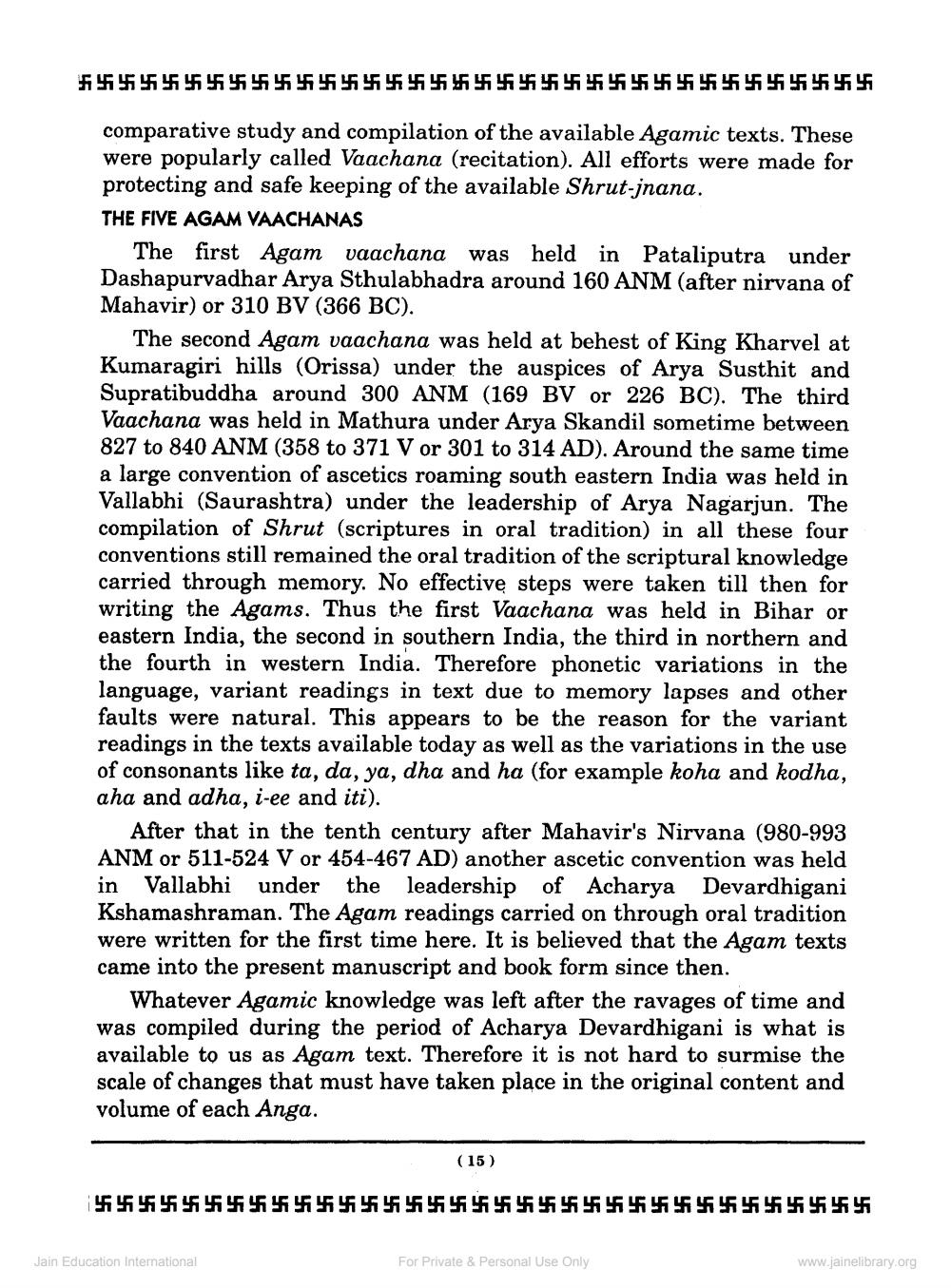________________
f16455545454545454545454545454545454545454545454545454545454545454
comparative study and compilation of the available Agamic texts. These were popularly called Vaachana (recitation). All efforts were made for protecting and safe keeping of the available Shrut-jnana. THE FIVE AGAM VAACHANAS
The first Agam vaachana was held in Pataliputra under Dashapurvadhar Arya Sthulabhadra around 160 ANM (after nirvana of Mahavir) or 310 BV (366 BC).
The second Agam vaachana was held at behest of King Kharvel at Kumaragiri hills (Orissa) under the auspices of Arya Susthit and Supratibuddha around 300 ANM (169 BV or 226 BC). The third Vaachana was held in Mathura under Arya Skandil sometime between 827 to 840 ANM (358 to 371 V or 301 to 314 AD). Around the same time a large convention of ascetics roaming south eastern India was held in Vallabhi (Saurashtra) under the leadership of Arya Nagarjun. The compilation of Shrut (scriptures in oral tradition) in all these four conventions still remained the oral tradition of the scriptural knowledge carried through memory. No effective steps were taken till then for writing the Agams. Thus the first Vaachana was held in Bihar or eastern India, the second in southern India, the third in northern and the fourth in western India. Therefore phonetic variations in the language, variant readings in text due to memory lapses and other faults were natural. This appears to be the reason for the variant readings in the texts available today as well as the variations in the use of consonants like ta, da, ya, dha and ha (for example koha and kodha, aha and adha, i-ee and iti).
After that in the tenth century after Mahavir's Nirvana (980-993 ANM or 511-524 V or 454-467 AD) another ascetic convention was held in Vallabhi under the leadership of Acharya Devardhigani Kshamashraman. The Agam readings carried on through oral tradition were written for the first time here. It is believed that the Agam texts came into the present manuscript and book form since then.
Whatever Agamic knowledge was left after the ravages of time and was compiled during the period of Acharya Devardhigani is what is available to us as Agam text. Therefore it is not hard to surmise the scale of changes that must have taken place in the original content and volume of each Anga.
(15)
455 456 454545454 455 456 457 4546454 455 456 457 455 456 457 455 456 454 455 456 457 455 456 457
4554
Jain Education International
For Private & Personal Use Only
www.jainelibrary.org




